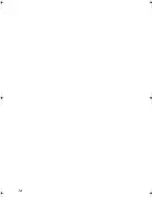
10. General Information
68
Paper specifications
Note for recording paper:
L
Do not use the following types of paper:
–
Paper with a cotton and/or fiber content that is over 20%, such as letterhead paper or paper used
for resumes
–
Extremely smooth or shiny paper, or paper that is highly textured
–
Coated, damaged or wrinkled paper
–
Paper with foreign objects attached, such as tabs or staples
–
Paper which has dust, lint or oil stains
–
Paper that will melt, vaporize, discolor, scorch or emit dangerous fumes near 200
°
C (392
°
F), such
as vellum paper. These materials may transfer onto the fusing roller and cause damage.
–
Moist paper
–
Inkjet paper
L
Some paper only accepts print on one side. Try using the other side of the paper if you are not happy
with the print quality or if misfeeding occurs.
L
For proper paper feeding and best print quality, we recommend using long-grained paper.
L
Do not use paper of different types or thickness at the same time. This may cause a paper jam.
L
Avoid double-sided printing.
L
Do not use paper printed from this unit for double-sided printing with other copiers or printers. This
may cause a paper jam.
L
To avoid curling, do not open paper packs until you are ready to use the paper. Store unused paper
in the original packaging, in a cool and dry location.
Recording paper size:
Letter: 216 mm
×
279 mm (8
1
/
2
"
×
11")
Legal: 216mm
×
356 mm (8
1
/
2
"
×
14")
A4: 210 mm
×
297 mm (8
1
/
4
"
×
11
11
/
16
")
Recording paper weight:
60 g/m
2
to 90 g/m
2
(16 lb. to 24 lb.)
ITU-T No. 1 Test Chart
FL541.book Page 68 Wednesday, August 27, 2003 7:07 PM













































